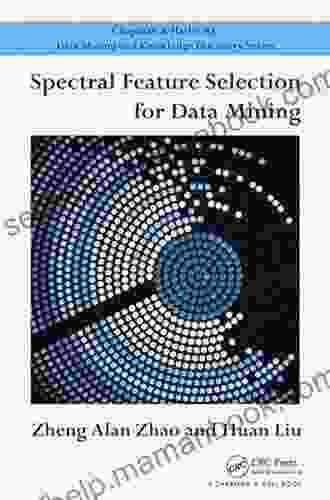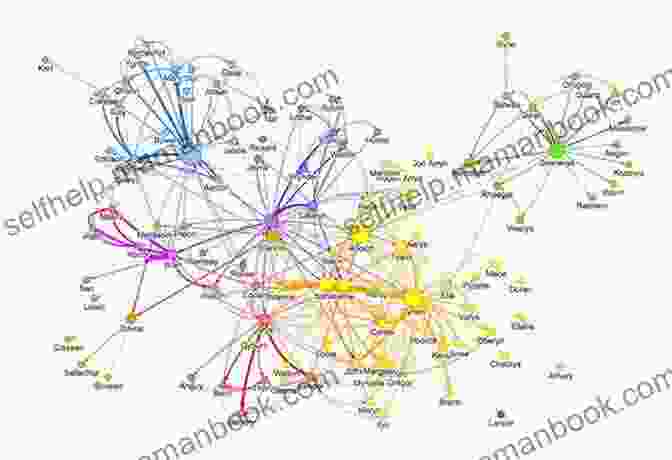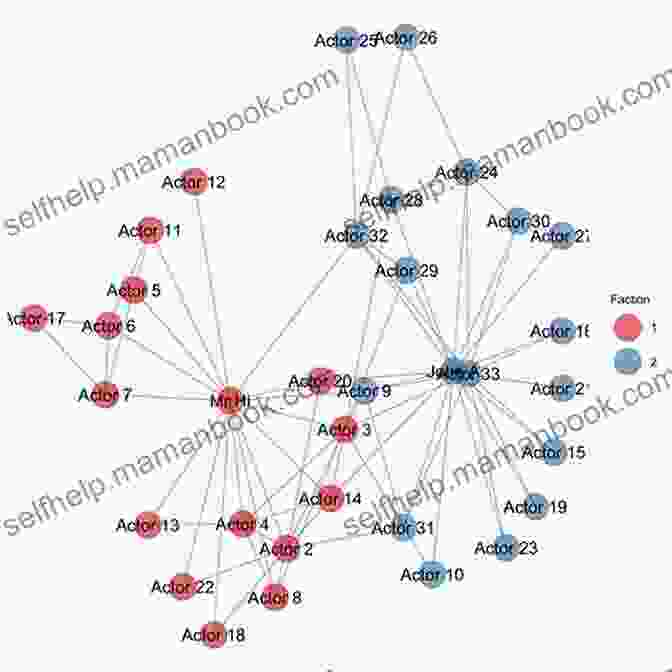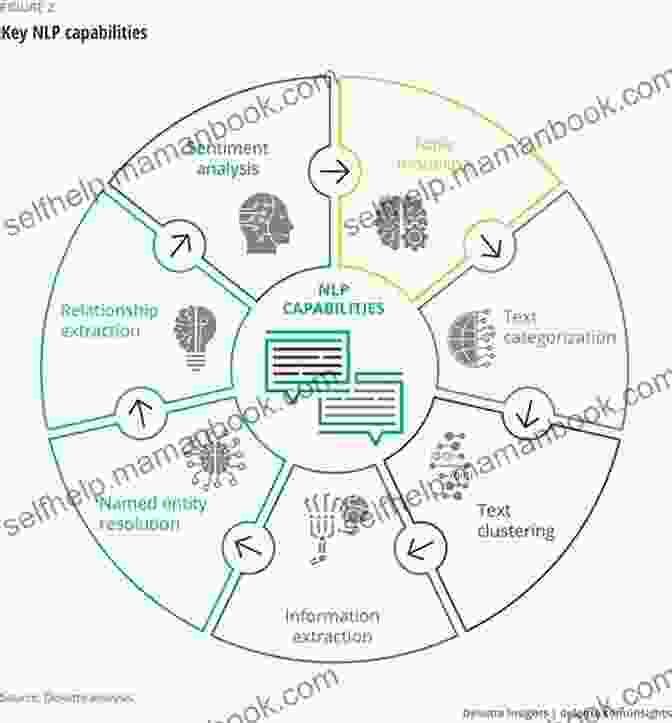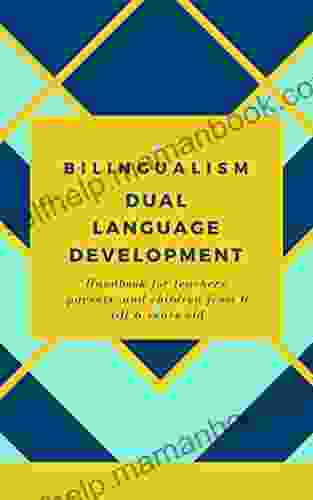Spectral Feature Selection for Data Mining: Unlocking Hidden Patterns with Mathematical Precision

Data mining, the process of uncovering insightful patterns and knowledge from vast datasets, has revolutionized decision-making in countless industries. At the heart of data mining lies feature selection, a critical step that helps reduce data dimensionality and improve model performance. Spectral feature selection stands out as a powerful technique that leverages mathematical principles to identify the most informative features, empowering data scientists to extract maximum value from their datasets.
The Role of Spectral Feature Selection
Spectral feature selection harnesses the mathematical concepts of graph theory and linear algebra to analyze the relationships between data points and features. It constructs a graph where nodes represent data points and edges represent the similarity between them. By decomposing the graph's Laplacian matrix, spectral feature selection identifies the eigenvectors that correspond to the lowest eigenvalues. These eigenvectors represent the most discriminative features that effectively separate different classes or clusters in the data.
4.4 out of 5
| Language | : | English |
| File size | : | 14219 KB |
| Screen Reader | : | Supported |
| Print length | : | 220 pages |
| X-Ray for textbooks | : | Enabled |
In essence, spectral feature selection captures the global structure of the data and identifies the features that best explain the underlying patterns. It offers several advantages over traditional feature selection methods:
- Preserves Data Structure: Spectral feature selection considers the relationships between data points, preserving the inherent structure and dependencies within the data.
- Handles Non-Linear Data: Unlike many feature selection techniques, spectral feature selection can effectively handle non-linear relationships and complex data distributions.
- Robust to Noise: By leveraging mathematical principles, spectral feature selection is inherently robust to noise and outliers, leading to more stable and reliable feature selection results.
Applications of Spectral Feature Selection
Spectral feature selection has found widespread applications in various domains, including:
- Image Processing: Selecting salient features for image classification, object detection, and face recognition.
- Natural Language Processing: Identifying important words and phrases for text categorization, sentiment analysis, and machine translation.
- Medical Diagnosis: Discovering biomarkers and disease-specific features for early detection and personalized treatment.
- Cybersecurity: Analyzing network traffic patterns to detect anomalies, identify malicious actors, and protect against cyber threats.
- Financial Analysis: Selecting financial indicators for stock price prediction, credit risk assessment, and portfolio optimization.
Challenges and Future Directions
Despite its strengths, spectral feature selection also faces certain challenges:
- Computational Complexity: Decomposing the Laplacian matrix can be computationally expensive for large datasets.
- Parameter Tuning: Selecting the appropriate number of features and regularization parameters requires careful tuning.
- Integration with Machine Learning Models: Integrating spectral feature selection into machine learning models can be non-trivial, potentially affecting model interpretability and performance.
Current research efforts are addressing these challenges by developing more efficient algorithms, optimizing parameter selection, and exploring novel approaches to integrate spectral feature selection with machine learning models. Future advancements in spectral feature selection promise to further enhance its capabilities and broaden its applications.
Spectral feature selection emerges as a powerful and versatile technique for data mining, empowering data scientists to identify the most informative features and extract maximum value from their datasets. By leveraging mathematical principles, it captures the global structure of data, handles non-linear relationships, and offers robustness to noise. As research continues to address existing challenges and explore new directions, spectral feature selection will undoubtedly play an increasingly vital role in driving data-driven decision-making and unlocking the full potential of data mining.
References
- Ng, A. Y., Jordan, M. I., & Weiss, Y. (2002). On spectral clustering: Analysis and an algorithm. Advances in Neural Information Processing Systems, 14(1),849-856.
- Belkin, M., & Niyogi, P. (2002). Laplacian eigenmaps for dimensionality reduction and data representation. Neural Computation, 15(6),1373-1396.
- Shi, J., & Malik, J. (2000). Normalized cuts and image segmentation. IEEE Transactions on Pattern Analysis and Machine Intelligence, 22(8),888-905.
- Zhu, X., Ghahramani, Z., & Lafferty, J. (2003). Semi-supervised learning using Gaussian fields and harmonic functions. Machine Learning, 50(3),259-291.
- Alpert, C. J., & Yao, S. Z. (1999). Spectral partitioning: Optimal partitioning of finite graphs. SIAM Review, 41(3),479-483.
Image Alt Attributes:
4.4 out of 5
| Language | : | English |
| File size | : | 14219 KB |
| Screen Reader | : | Supported |
| Print length | : | 220 pages |
| X-Ray for textbooks | : | Enabled |
Do you want to contribute by writing guest posts on this blog?
Please contact us and send us a resume of previous articles that you have written.
 Top Book
Top Book Novel
Novel Fiction
Fiction Nonfiction
Nonfiction Literature
Literature Paperback
Paperback Hardcover
Hardcover E-book
E-book Audiobook
Audiobook Bestseller
Bestseller Classic
Classic Mystery
Mystery Thriller
Thriller Romance
Romance Fantasy
Fantasy Science Fiction
Science Fiction Biography
Biography Memoir
Memoir Autobiography
Autobiography Poetry
Poetry Drama
Drama Historical Fiction
Historical Fiction Self-help
Self-help Young Adult
Young Adult Childrens Books
Childrens Books Graphic Novel
Graphic Novel Anthology
Anthology Series
Series Encyclopedia
Encyclopedia Reference
Reference Guidebook
Guidebook Textbook
Textbook Workbook
Workbook Journal
Journal Diary
Diary Manuscript
Manuscript Folio
Folio Pulp Fiction
Pulp Fiction Short Stories
Short Stories Fairy Tales
Fairy Tales Fables
Fables Mythology
Mythology Philosophy
Philosophy Religion
Religion Spirituality
Spirituality Essays
Essays Critique
Critique Commentary
Commentary Glossary
Glossary Bibliography
Bibliography Index
Index Table of Contents
Table of Contents Preface
Preface Introduction
Introduction Foreword
Foreword Afterword
Afterword Appendices
Appendices Annotations
Annotations Footnotes
Footnotes Epilogue
Epilogue Prologue
Prologue Brynn Tannehill
Brynn Tannehill Michael Chaskalson
Michael Chaskalson Julia Heaberlin
Julia Heaberlin Rachel Menard
Rachel Menard Shawn D Guiont
Shawn D Guiont Andy Dunn
Andy Dunn F T Rossi
F T Rossi Paul Griner
Paul Griner Frank Mccourt
Frank Mccourt Hemang Doshi
Hemang Doshi Stu Jones
Stu Jones Lana Popovic
Lana Popovic Malcolm Mackenzie
Malcolm Mackenzie Amanda M Czerniawski
Amanda M Czerniawski Emma Robinson
Emma Robinson Sherri Granato
Sherri Granato Naomi Shihab Nye
Naomi Shihab Nye Susanne Hope
Susanne Hope Zachary Mahnke
Zachary Mahnke Julia Drosten
Julia Drosten
Light bulbAdvertise smarter! Our strategic ad space ensures maximum exposure. Reserve your spot today!

 Terence NelsonEpigrams: Modern Library Classics by Martial: A Literary Masterpiece of Wit...
Terence NelsonEpigrams: Modern Library Classics by Martial: A Literary Masterpiece of Wit... Cody RussellFollow ·17.4k
Cody RussellFollow ·17.4k Jayson PowellFollow ·9.9k
Jayson PowellFollow ·9.9k Russell MitchellFollow ·9.4k
Russell MitchellFollow ·9.4k Julio Ramón RibeyroFollow ·12k
Julio Ramón RibeyroFollow ·12k Patrick RothfussFollow ·12.3k
Patrick RothfussFollow ·12.3k Forrest ReedFollow ·19.9k
Forrest ReedFollow ·19.9k Anton ChekhovFollow ·4.1k
Anton ChekhovFollow ·4.1k Jack PowellFollow ·8.2k
Jack PowellFollow ·8.2k

 Boris Pasternak
Boris PasternakThe Misted Mirror: Mindfulness for Schools and...
What is The Misted...

 Holden Bell
Holden BellEmbark on Thrilling Adventures in the Uncharted Depths of...
Unveiling the Enchanting...

 Seth Hayes
Seth HayesDelphi Complete Works of Lucan: Illustrated Delphi...
This meticulously edited...

 Jackson Hayes
Jackson HayesThe Enigmatic Cat Burglar: Unraveling the Intriguing...
In the annals of crime, the name Bernie...

 Quentin Powell
Quentin PowellAligned With The Cisa Review Manual 2024 To Help You...
The CISA Review Manual 2024 is the most...

 Austin Ford
Austin FordUnlocking Revenue Potential: A Comprehensive Business...
In today's digital...
4.4 out of 5
| Language | : | English |
| File size | : | 14219 KB |
| Screen Reader | : | Supported |
| Print length | : | 220 pages |
| X-Ray for textbooks | : | Enabled |


